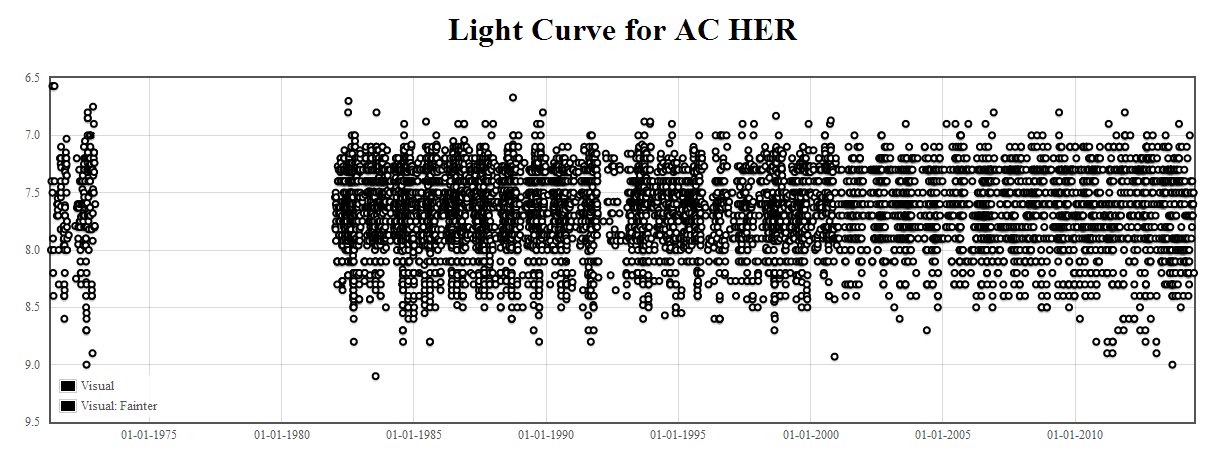
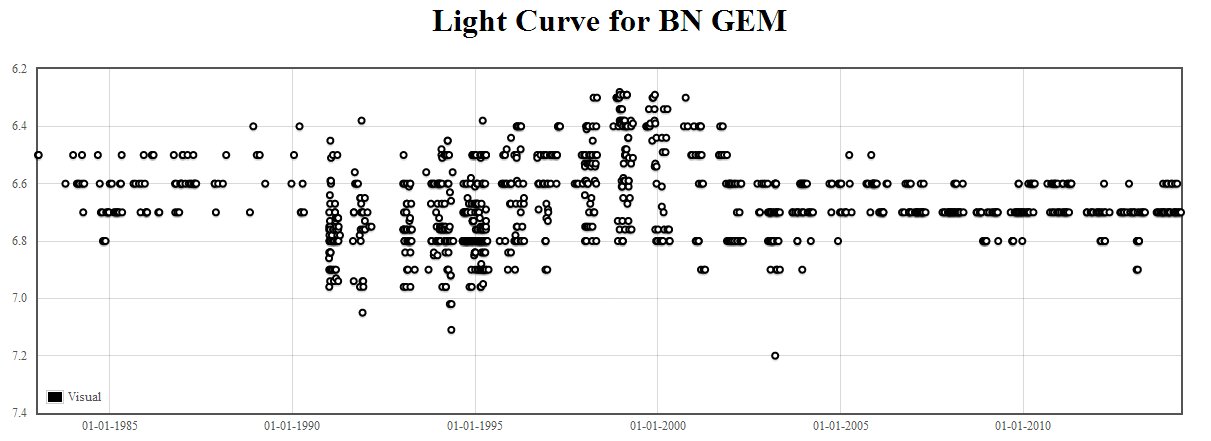
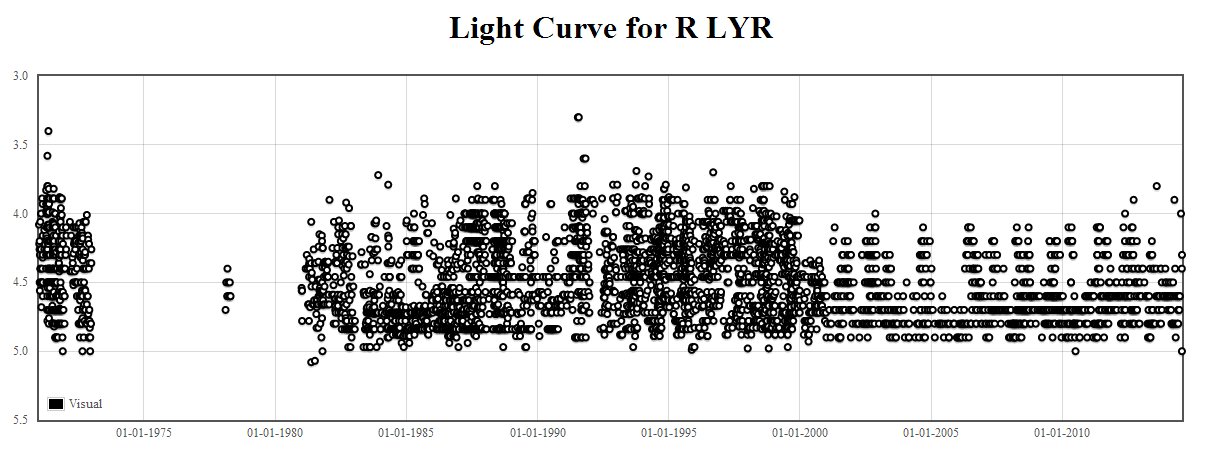
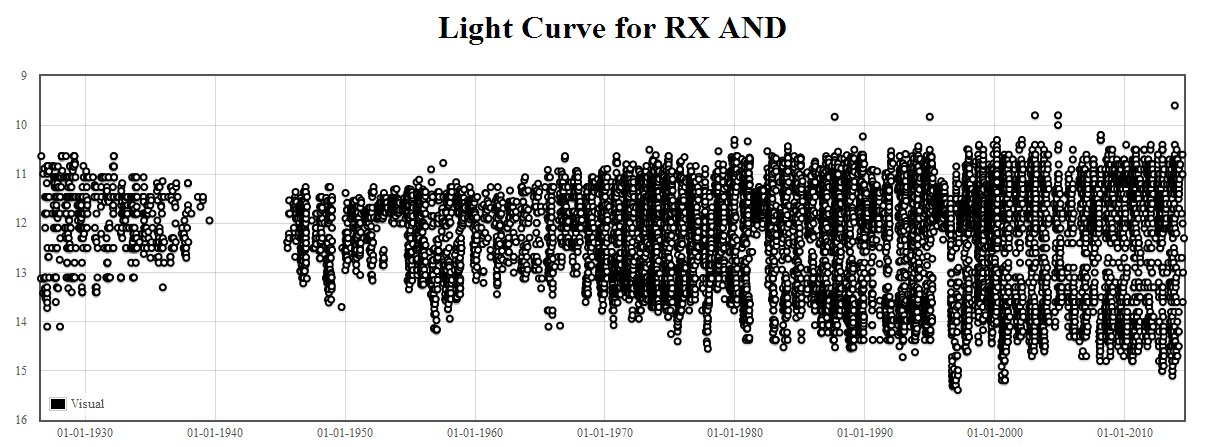
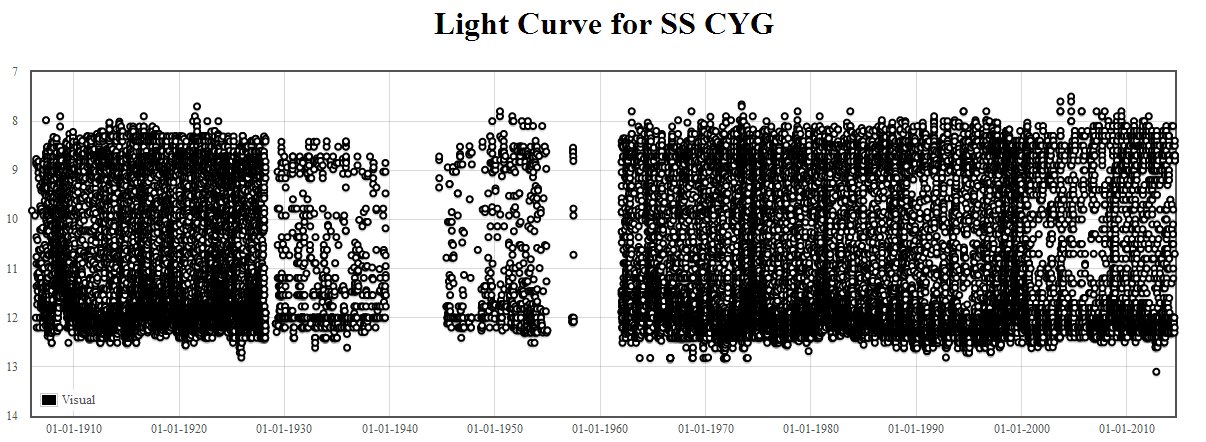
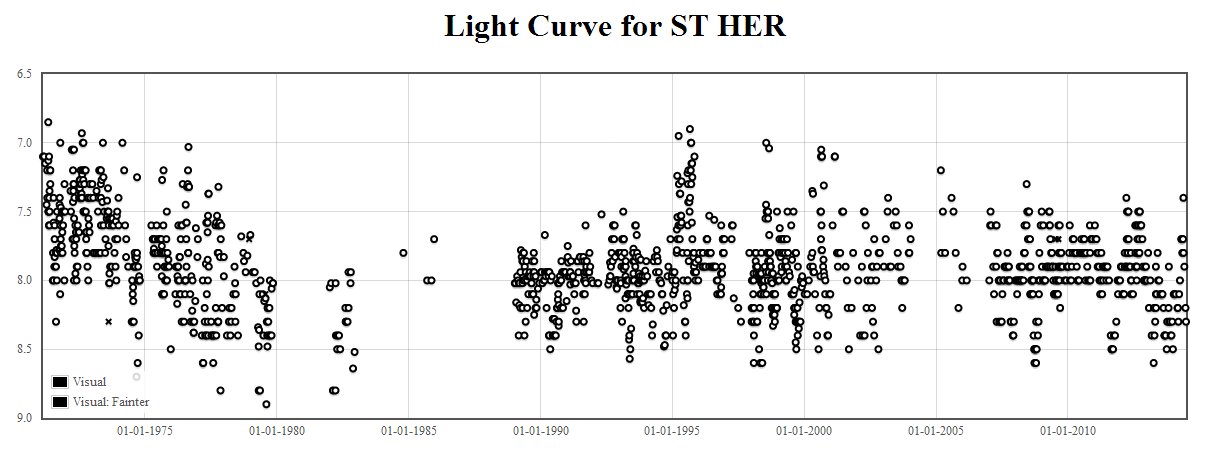
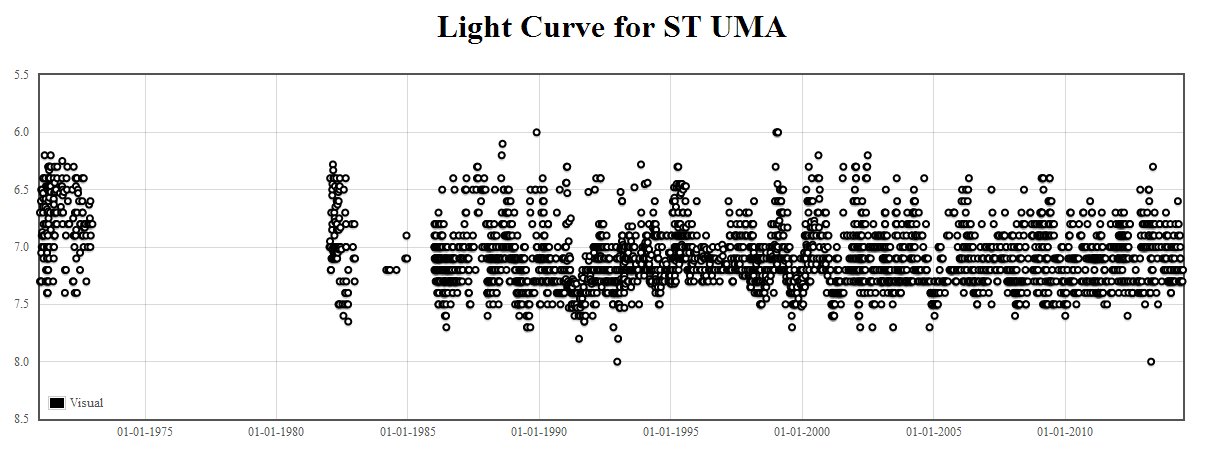
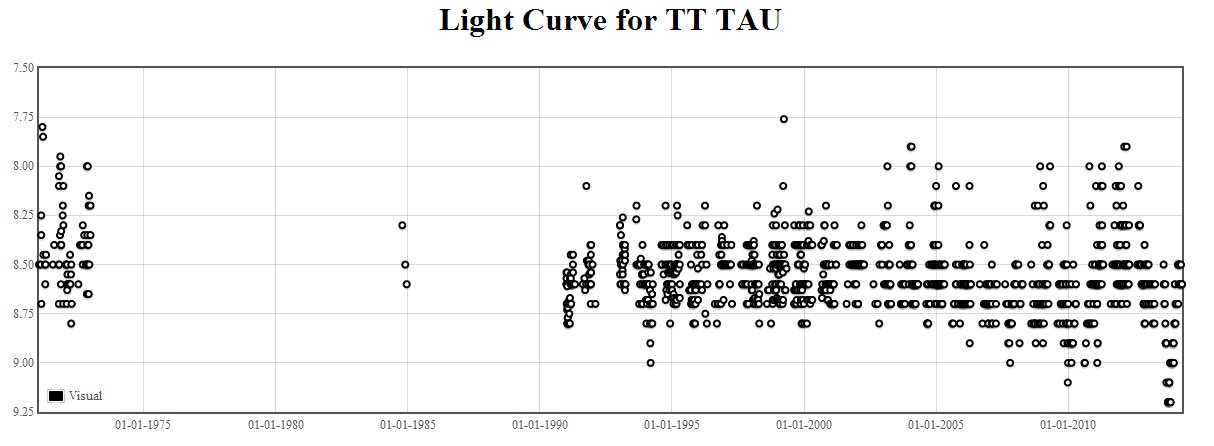

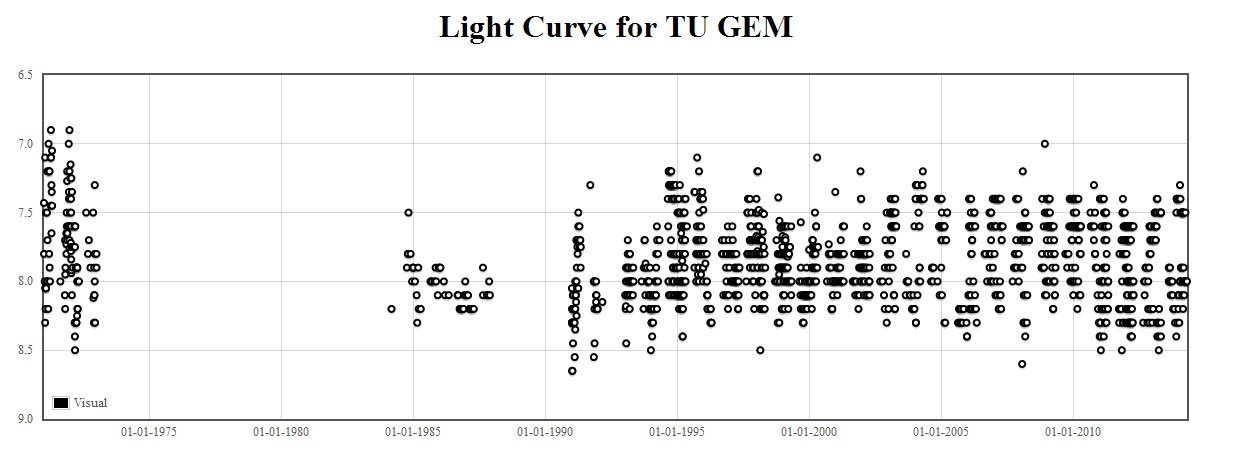
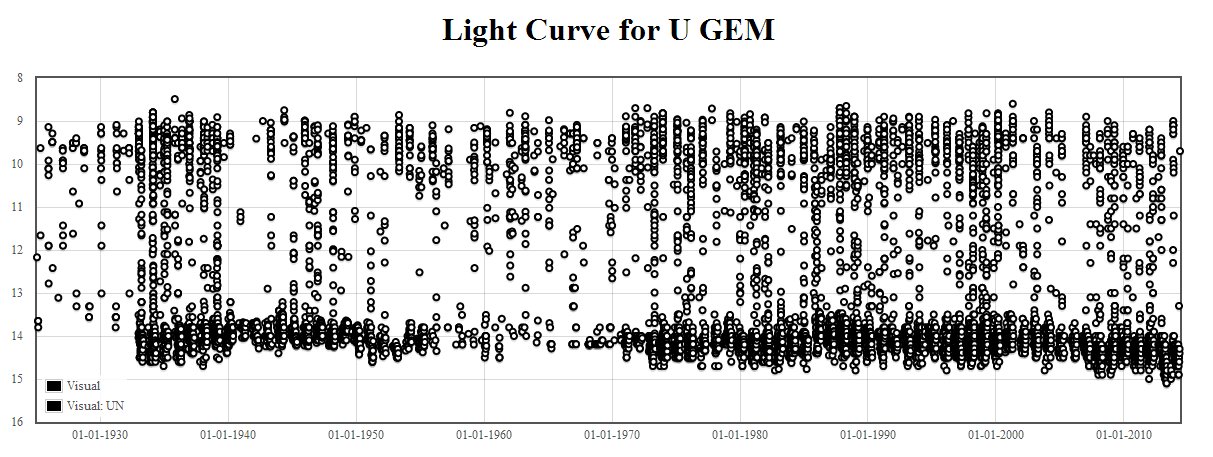
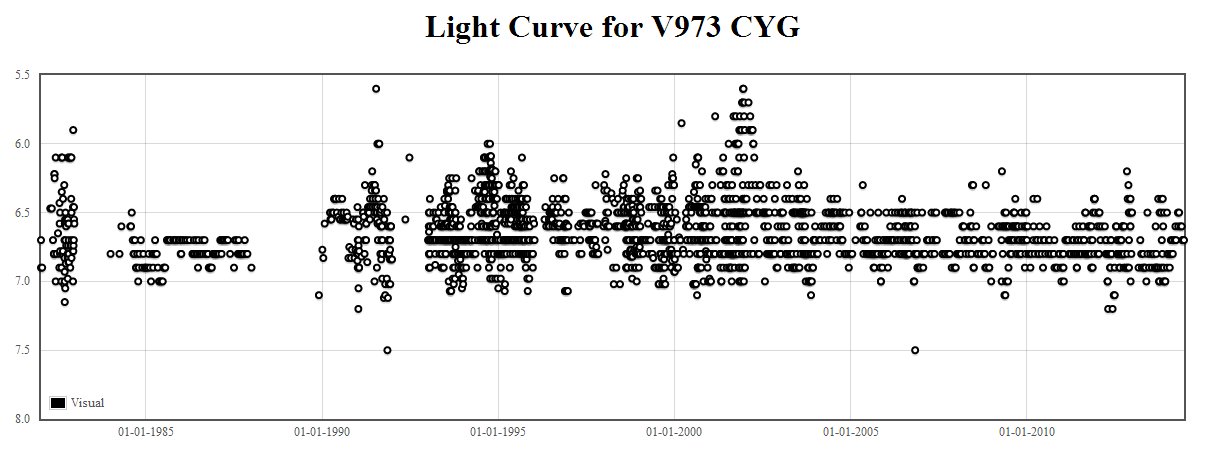
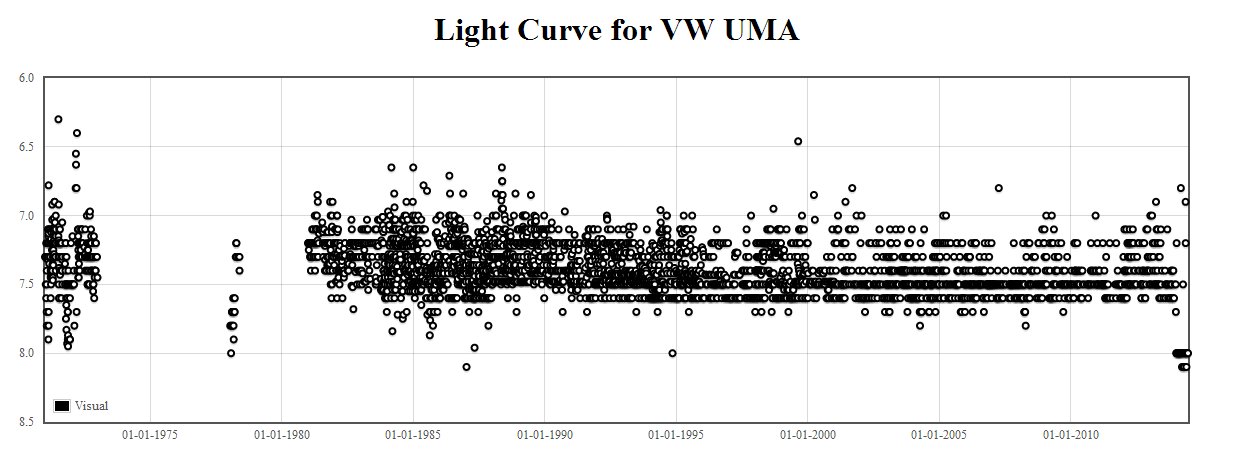
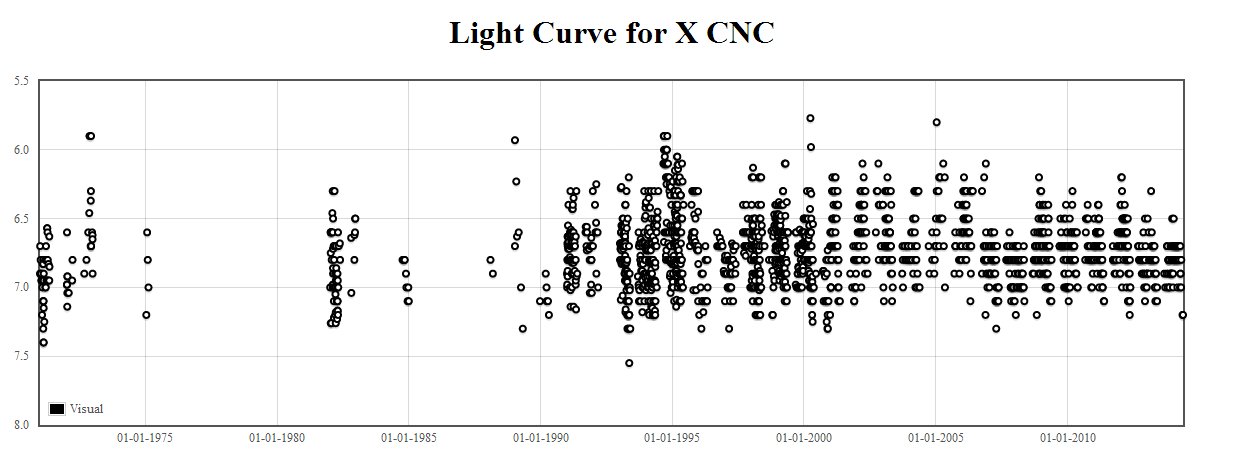
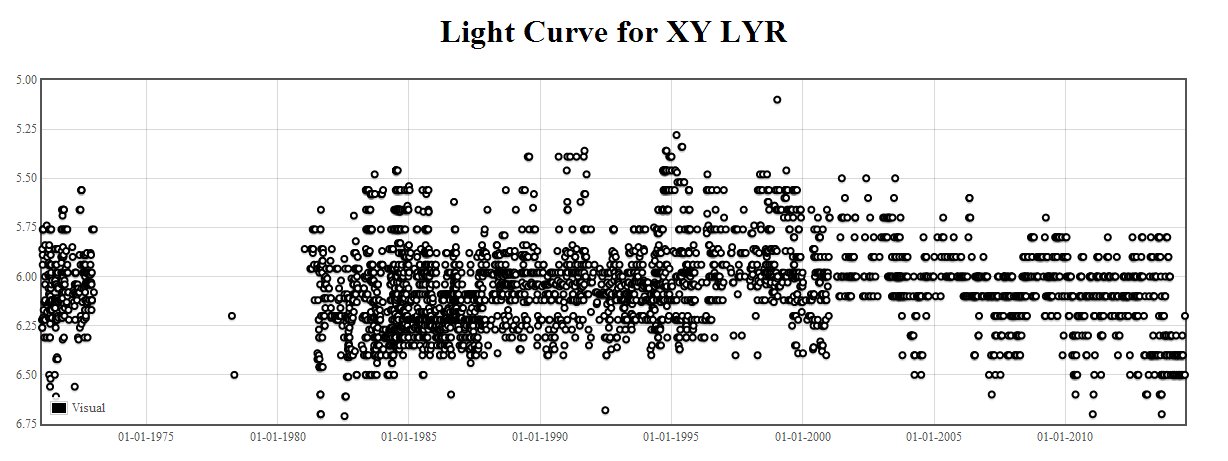

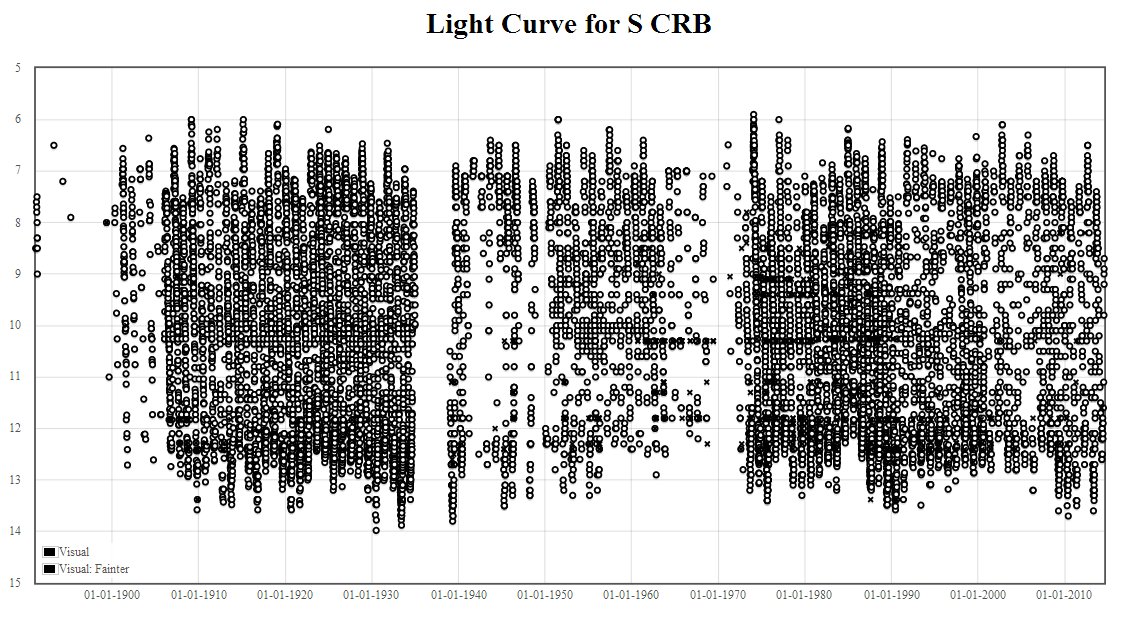
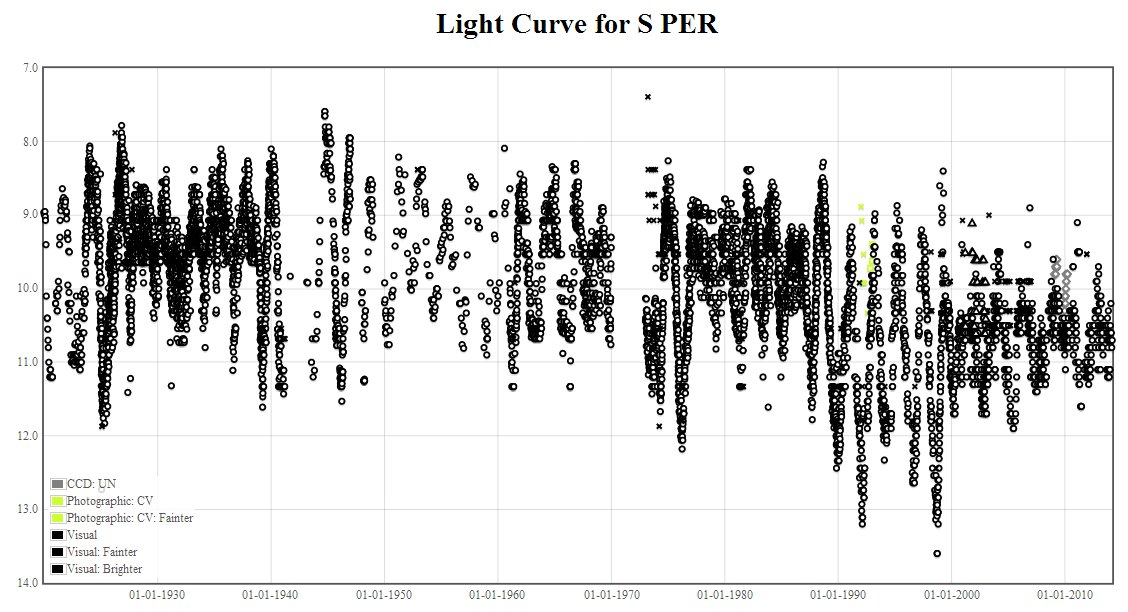
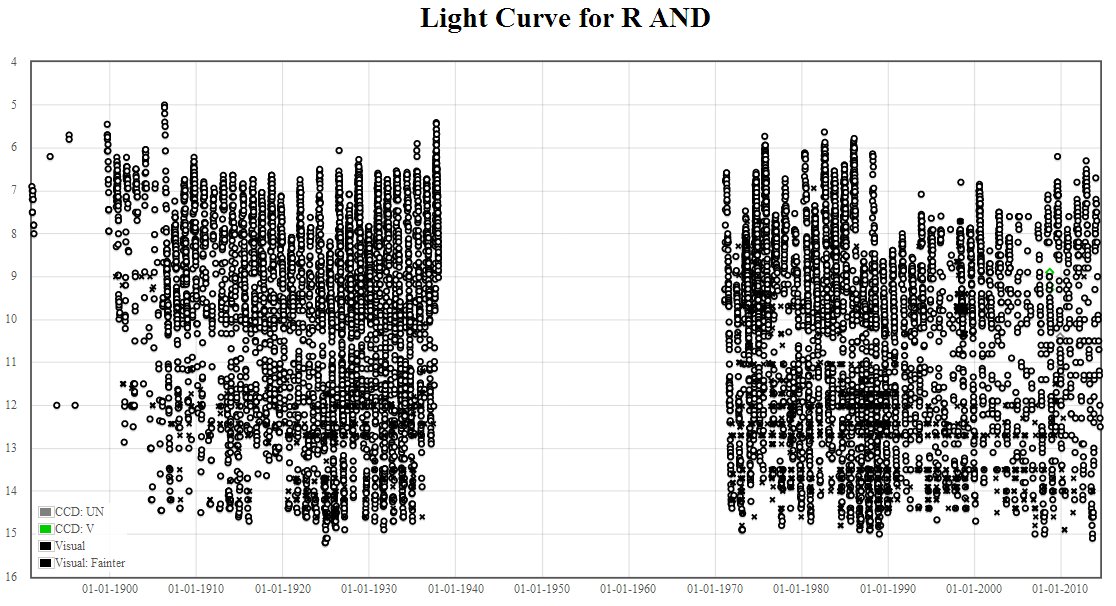
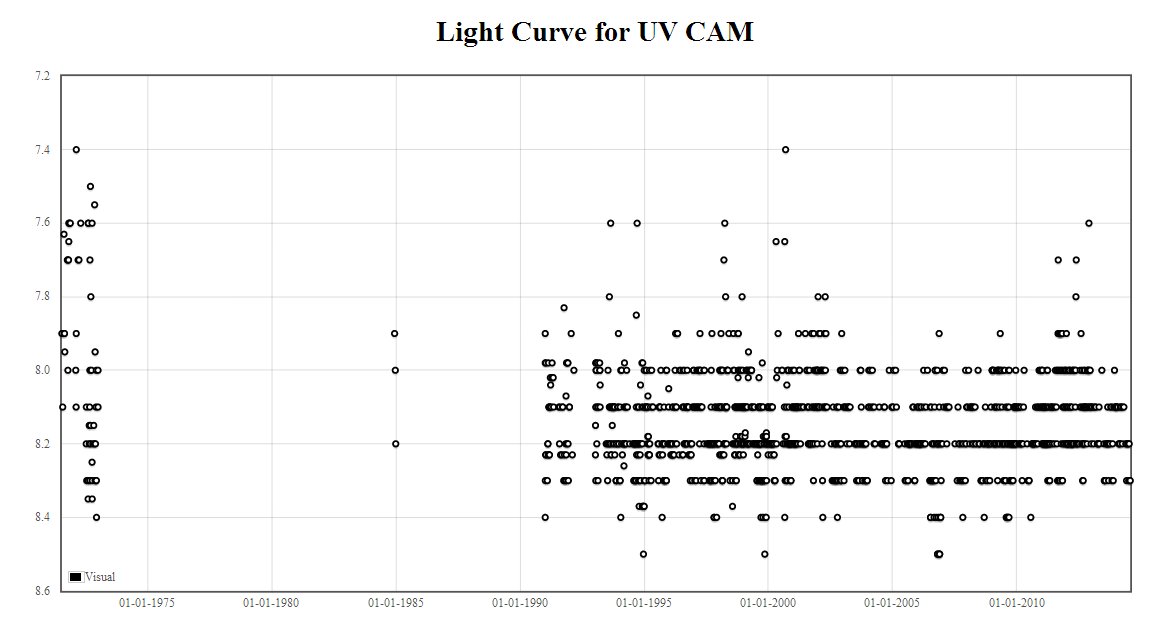
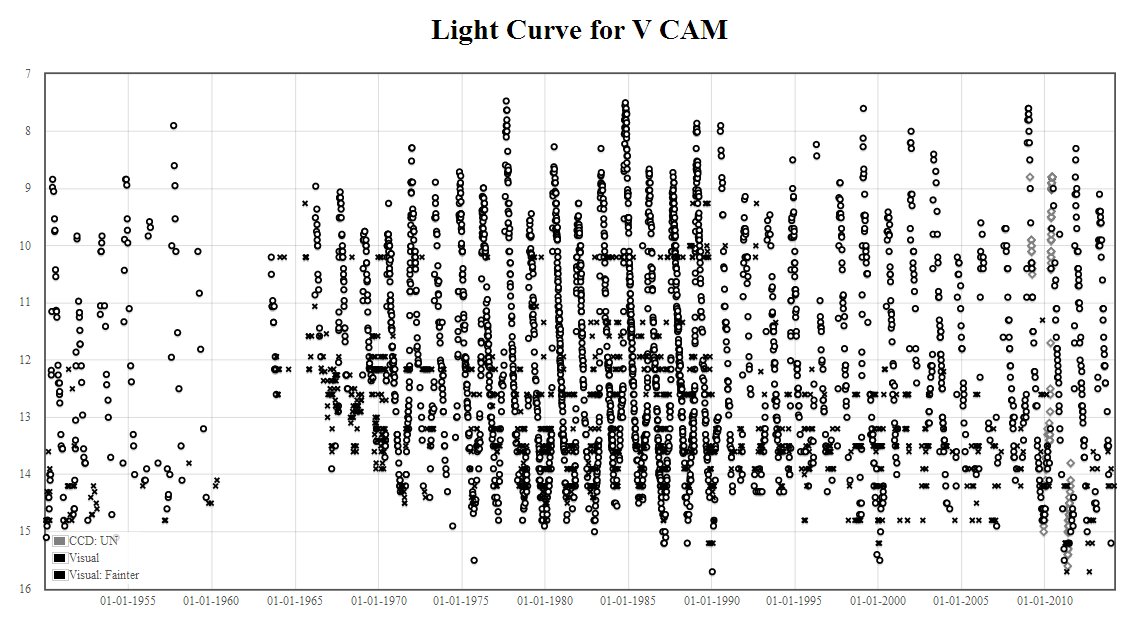

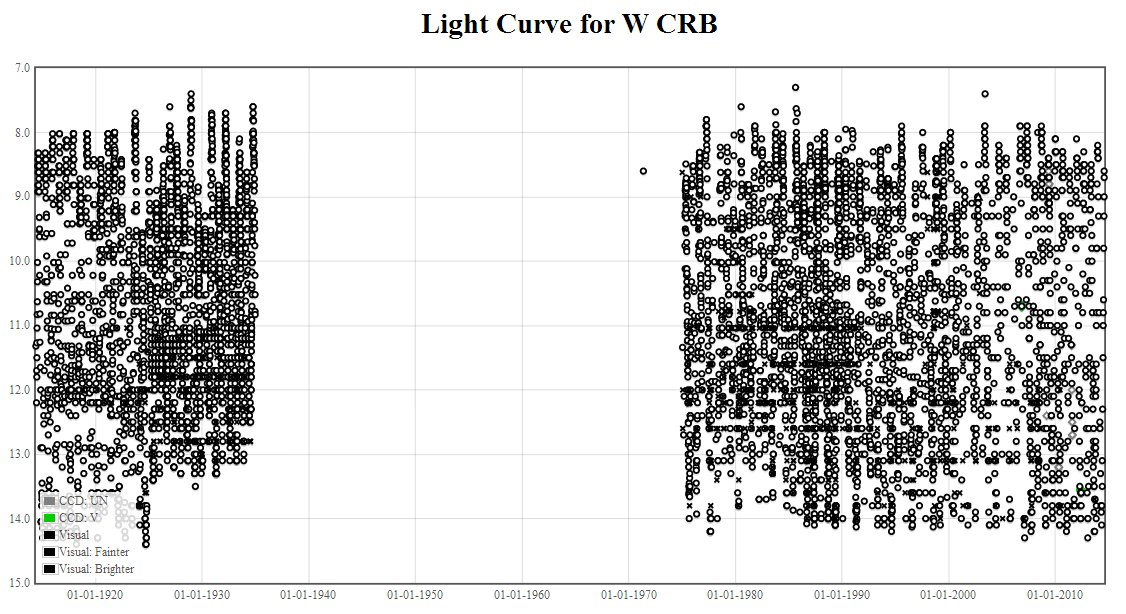
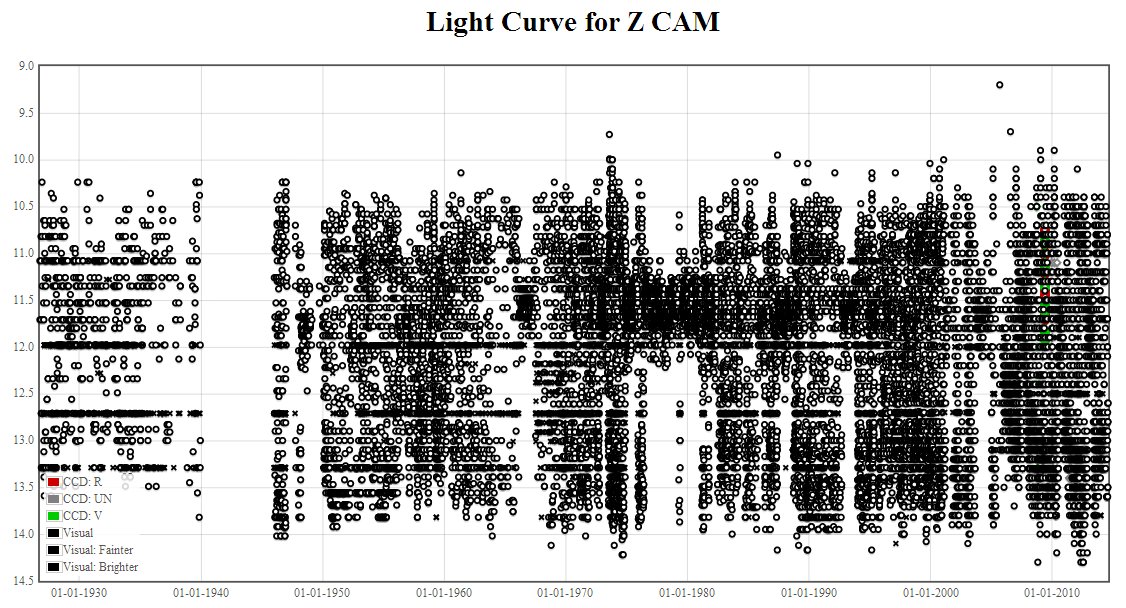
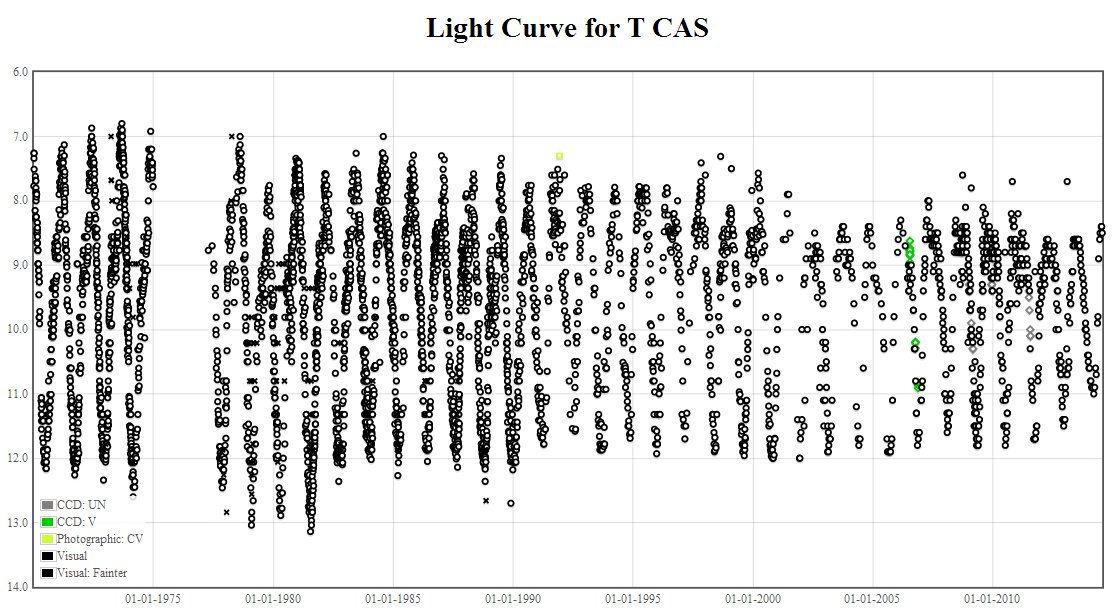
Gaps in historical light curves
Courtesy of the database software (see http://britastro.org/vssdb/ ) written by Andy Wilson, it is now straightforward to extract observations from the BAA VSS database and to plot historical light curves for variable stars.
This has revealed, however, that there are unexpected gaps in some of the light curves. The gaps do not seem to be random. Rather, all observations for certain whole calendar years are not present for some stars. We have good reason to believe that observations were submitted for the years involved, but it appears that the data later went astray.
How you can help
Obviously it would be wonderful if we could fill in these gaps.
Please have a look through the reports which highlight the gaps in the binocular and telescopic programmes and contact the Director if you believe that you have observations that will fill in some of the gaps.
Binocular Programme gaps
Many people would like to forget some aspects of the 1970s and 1980s. We need to make sure, however, that this does not include the loss of variable star observations.
The light curves which follow highlight those Binocular Programme stars whose light curves contain gaps lasting for a year or more. In some cases there is also absence of observations from their early years on the programme. Indeed, some stars (including RV Mon, SX Mon, SW Vir and BK Vir) seem to be missing all data from their first 15-20 years.
All of the binocular programme stars investigated (apart from a few such as W Cyg and R Sct which had been part of the main programme for several decades already) were added to the programme within a few years of 1971 and so their light curves should extend back to this period.
As can be seen, many stars have data missing from the late 1970s. There are also many stars with gaps for much of the 1980s (although 1982 often fares much better). Some stars also have gaps of a year or more in the early 1990s. The view of the 1980s and early 1990s is, however, slightly masked in these light curves because Tony Markham has recently resubmitted his observations for these years for many of these stars (particularly those in Cas, Cep, CrB, Cyg, Gem, Her). These years would otherwise have been blank.
Note that despite extensive gaps, R Sct has not been included here as there is still a large amount of data for it awaiting upload.
We know that data was received for the missing years because annual totals were often published for stars on the binocular programme (e.g. VSSC 27 contains totals for 1975, VSSC 65 contains totals for 1986). It is interesting to note however that the website light curves created by Dave McAdam in the late 1990s do not cover years for which there are database gaps, which could suggest that the data was already missing by then (alternatively, it could simply be that the data was to hand but was still awaiting input).
Note that these light curves do not include stars (NSVs, etc) that have been dropped from the binocular programme over the years. However, many of these also show gaps in light curves during the years that they were on the programme.
Telescopic Programme gaps
The Telescopic programme has had a long history and the paper report forms for some variables have had to survive two world wars! In general, the light curve gaps occur during the earlier decades and coverage after the mid 1970s looks to be rather good - we do not see the later gaps that occur for Binocular programme stars.
The light curves which follow highlight Telescopic Programme stars whose light curves contain gaps lasting for a year or more.
It is possible that in some cases that a star was dropped from the programme and then later reinstated. This may explain the gaps for R And and for W CrB. However, VSSC 16 (1973 Sep) and VSSC 20 (1974 Sep) do include annual totals for 1972 and 1973 for W CrB, but the data in its light curve only resumes from 1974 onwards.
Some gaps are understandable – several, but not all, stars have gaps during the years of the Second World War.
There are also notable spells of many years when data for some stars was sparse. This could either indicate that data has been lost or simply that the section was less active and/or the stars involved were less popular at the time.
Once again, the website light curves created by Dave McAdam in the late 1990s do not cover years for which there are database gaps - they often start just after the end of the last gap - which could suggest that the data was already missing by then (alternatively, it could simply be that the data was to hand, but was still awaiting input).
Many of the stars currently on the Telescopic programme are relatively recent additions. It has been assumed therefore that the start of their light curves most likely coincides with when they were added to the programme. Examples include SU Tau (1964), XX Cam (1971), CH UMa (1972), X Leo (1981), FG Sge (1984), AX Per (1988), V Sge (1989), Z UMi (1995). However, some members may well have observations available from earlier years when these stars were not officially part of the programme. Such observations would be useful additions to the database.
























